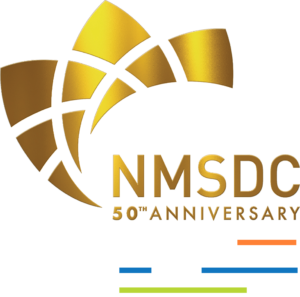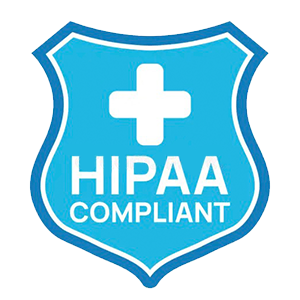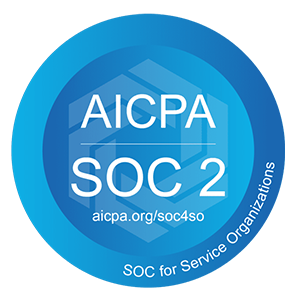For a remote work environment to thrive, the appropriate resources are essential in driving collaboration, efficiency, and productivity. What would happen if a farmer were sent to the farm without the appropriate tools, like a plow, seeds, or water? The outcome would be wasted effort, low productivity, and frustration. The same applies to employers and virtual assistants; without the right resources and tools, work slows down, communication breaks down, and efficiency drops.
In this guide, we explore the best free virtual assistant resources and tools every employer should know in 2025, covering everything from communication to task management, productivity, and even customer service.
Best Free Virtual Assistant Resources and Tools
Free virtual assistant resources and tools are often limited; however, they help small business owners to create systems from the start, enabling them to build structures within their teams. The following free resources cover everything, from communication to cybersecurity and data privacy, helping employers maximize productivity without extra costs.
1. Communication tools
Clear communication is the backbone of any remote collaboration between virtual assistants and their employers. To facilitate connection, a platform to consult, share updates, and collaborate in real-time, here are some communication tools for virtual assistants that employers can leverage.
Slack – Slack is a messaging platform designed for teams, allowing channels, direct messaging, and file sharing. It helps reduce email clutter and keep conversations organized.
Microsoft Teams – Microsoft Teams combines chat, video calls, and file sharing in one application, making it easy for your virtual assistants to stay aligned in the business.
WhatsApp – While WhatsApp is designed for personal use, employers can leverage it especially for emergency messages to team members, for example, in cases where they are unreachable through other communication channels.
Key features that every employer should pay attention to when choosing free virtual assistant resources and tools for communication include integration with other tools, provision for real-time messaging, video and audio capability, and user friendliness.
2. Project management tools
These tools help in organizing tasks for Vas, setting deadlines, and tracking progress in real time. They promote accountability and transparency among remote teams. They include;
Trello – Trello uses a card and board system to visually track tasks and projects, making it ideal for simple workflows. This tool is most preferred by small business owners due to its simplicity and ease of use.
Asana – Asana is an effective project management platform for virtual assistants to organize their work and manage projects by workspaces, projects, and tasks.
Google Workspace – While Google Workspace is not a dedicated project management tool, it provides a suite of tools that businesses can leverage, such as Google Drive, Docs, Sheets, Calendar, Chat, and Meet to collaborate, share files, track progress, and communicate efficiently.
Notion – Among various project management tools, Notion dominates the number of users due to its all-in-one nature, making it excellent for centralized knowledge, task management and collaboration. It offers a free plan that teams can share workspaces and even provides templates that further facilitate its use.
When choosing a project management tool for virtual assistants, it is advisable to consider capabilities such as task assignment, deadline setting and tracking, and collaboration.
3. Cloud storage and file sharing tools
Daily, VAs are met with numerous documentation tasks that require them to handle multiple documents. Using efficient cloud storage tools ensures these documents are accessible, secure, and shareable anytime.
Google Drive – Google Drive offers free storage for documents, in the form of presentations, PDF documents, spreadsheets, and media files, with real-time collaboration such as editing and sharing. This choice of tool excels for businesses using Google Workspace.
OneDrive – For businesses that use Microsoft Office, OneDrive integrates with other applications to facilitate storage and file-sharing and provides unique features such as password-protected links and expiration dates for shared files.
Dropbox – Dropbox is also widely used across teams for file storage and synchronization of large files across devices.
The key guide to choosing between cloud storage platforms is the storage capacity, file sharing options, and compatibility with devices and existing systems.
4. Time management and productivity tools
Time management tools help monitor productivity, track work hours, and manage deadlines. These are various tools that work in different ways to track attendance management and productivity.
Hubstaff – Hubstaff is a simple yet powerful time tracking software that works by taking screenshots and monitoring keyboard strokes and mouse movements, and later compiling timesheets and productivity rates.
Clockify – Clockify tracks attendance and time management by letting users start a timer when they begin working on a task and stop it once done. It also tracks time spent in specific applications and websites, providing a detailed overview of daily activity.
TimeStamps – TimeStamps is a simple tool that employers use to record work hours and track deadlines efficiently. It also calculates overtime hours, reducing guesswork and miscalculation of worked hours.
Employers should look for accuracy in time tracking, reporting capabilities, ease of use, and cross-device accessibility when determining which time tracking tool to use.
5. Scheduling tools
Scheduling tools save time by simplifying calendar management, appointment setting, and meeting coordination without necessarily having back-and-forth email conversations that slow down remote work.
Calendly – Calendly allows employers and remote virtual assistants to share availability and automatically schedule meetings. In addition, this tool can also be used to set client meetings based on their availability.
Google Calendar – Google Calendar provides an easy way to schedule events, set reminders, and sync across devices.
Key features to look out for when considering free virtual assistant resources and tools for scheduling are sync capabilities with calendars, automated reminders and notifications, time zone support, and integration.
6. Writing and AI tools
The use of artificial Intelligence (AI) tools has become inevitable for teams that value faster productivity. These tools also help Vas create professional content, streamline communication, and automate repetitive tasks.
Grammarly – Grammarly is primarily used for checking grammar, spelling, and tone to ensure polished writing.
ChatGPT – VAs utilize ChatGPT for drafting emails, content creation, and ideation, and generating ideas for their work.
Otter.ai – Otter.ai is essential for transcribing meetings and notes automatically for easier documentation. VAs can link this tool to the meeting platform they use for client meetings to aid documentation, such as minutes and sharing clear action points without misquoting.
7. CRM and client management tools
Virtual assistant tools for client management play a big role in the success of a VA’s role. Since they are the first point of contact between a business and its clients, having the right tools to manage interactions, track leads, and maintain strong client interactions is essential.
HubSpot CRM – HubSpot’s free CRM powers your customer service by enabling you to manage contacts, monitor sales workflows, and track communications.
Zoho CRM – Zoho CRM offers contact management, lead tracking, workflow automation, and lead tracking for small teams.
8. Cybersecurity tools
As important as all these tools mentioned above are, the lack of proper access and security management can put sensitive data that is shared across platforms when working with virtual assistants.
LastPass – LastPass stores and manages passwords securely for teams.
Google Authenticator – Google Authenticator adds two-step verification for stronger account security.
How to Choose the Right Tools for Your Virtual Assistant
The choice of tools that you use for managing tasks and efficiency between you and your virtual assistant is determined by various factors. Here is a checklist to refer to anytime you consider choosing free virtual assistant resources and tools.
- Make sure the tool you choose easily integrates with your existing systems
- Choose tools that can grow with your business as you expand and as needs evolve.
- Select tools that your VA can easily learn and adopt quickly
- Prioritize data privacy and protection policies provided in various tools and choose one that protects your sensitive business and client information
- Choose tools that align with your assistant’s specific responsibilities to avoid unnecessary complexity. If your VA only performs basic project management, utilize tools with simple layouts and provisions.
Build an Efficient Virtual System with Remote Raven
The process of hiring a virtual assistant does not end at sending them a confirmation letter. How you provide them with the right tools for their work determines the output and delivery. At Remote Raven, we walk with you from recruitment and onboarding and offer you the support you need to set up an effective system to work with your virtual assistant.
Free virtual assistant resources and tools provide everything you need to build a productive team, but choosing the right ones makes all the difference. Walk with our recruitment experts to build the best stack for your teams. Contact us today.





